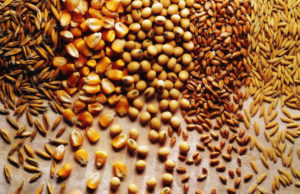 Grain futures rose on Monday with soybeans advancing more than 1.5% on forecasts for dry weather that could harm yields. Corn and wheat also surged.
Grain futures rose on Monday with soybeans advancing more than 1.5% on forecasts for dry weather that could harm yields. Corn and wheat also surged.
On the Chicago Board of Trade, soybeans futures for September delivery traded at $13.0500 a bushel at 12:06 GMT, up 1.67% on the day. Prices held in range between days high and low of $13.0988 and $12.9725 per bushel respectively. The oilseed fell 0.45% on Friday but settled the week 5.22% higher.
Soybean prices were supported last week as the U.S. Department of Agriculture reported that 1.619 million acres of land that was poised to be sown to soybeans remained unplanted, well above last year’s 159 579 acres. Meanwhile, persisting dry weather across the west-central Midwest for the next 10 days is expected to stress the soybeans and corn crops, MDA Information Systems LLC said on August 16.
At the same time, exports of the grain are rising with 284 000 tons already sold to China for delivery in the year beginning September 1. The USDA said that U.S. outbound shipments totaled 1.9 million tons in the week ended August 8, above the preceding weeks 1.1 million.
Paul Deane, an agricultural economist at Australia & New Zealand Banking Group Ltd., said for Bloomberg: “There’s dryness starting to creep back in in parts of the Midwest. Export sales were strong last week for soybeans.”
The U.S. Department of Agriculture trimmed its soybean production forecast to 3.255 billion bushels last Monday, 5% below July’s 3.42 billion estimate. Yields expectations were also reduced and now stood at 42.6 bushels per acre, below the previous reading of 44.5 bushels and analysts’ projections for a 43.6 output per acre.
Corn surges
Corn rose almost 2% on Monday as the unfavorable weather conditions may also hurt corn yields. Futures for delivery in September rose by 1.85% to $4.8238 a bushel at 12:06 GMT. The contract ranged between days high at $4.8588, the highest since August 2, and low of $4.8213. The grain settled 1.74% lower on Friday but closed the week 1.96% on the upside after plunging 2.36% the preceding one.
The USDA trimmed its U.S. corn output forecast to 13.763 billion bushels last Monday, 1.3% below its July estimate at 13.950 billion and also less than the 14.036 billion forecast by a Bloomberg survey. Yields are also expected to be lower with the government agency cutting its expectations for 154.4 bushels per acre, which is below last month’s estimate at 156.5 bushels and analysts’ expectations for a 157.7 bushels-per-acre yield. Stockpiles are also poised to drop and will equal 1.837 billion bushels, 6% below July’s 1.959 billion projections.
However, according to Goldman Sachs Group Inc. and Deutsche Bank AG, corn output will be above USDAs latest forecast and will total 14.14 billion and 14.25 billion bushels respectively, the two groups predicted. Even if the government agencys projection is met, this years harvest will still be a record-high and 28% above 2012s drought-damaged crop.
Dave Smoldt, a vice president for FCStone LLC in West Des Moines, Iowa, said for Bloomberg: “We are going to harvest a record corn crop. There are high plant populations, and the cool temperatures have helped corn yields. The crop needs the warmer weather and more rain to finish strong.” He predicted a 13.993 billion bushels harvest.
Elsewhere on the market, wheat rose to $6.3600 per bushel at 12:03 GMT, up 0.79% on the day. Prices ranged between days high and low of $6.4213 and $6.3575 per bushel respectively. The grain fell 0.96% on Friday, erasing previous weeks earlier gains and settling 0.34% lower.
Wheat was pressured throughout the week as the USDA kept its U.S. wheat crop forecast unchanged at 2.114 billion bushels, while global production is still expected to reach an all-time record high of 705.4 million tons. However, the grain received a little boost as the USDA reported that spring wheat harvesting fell well behind last year’s pace. As of August 11, only 6% of the spring wheat crop was reaped, compared to the five-year average pace of 24% and last year’s 61% during the comparable week. However, winter wheat harvesting was 1% above the average speed at 92% and 2% below last year’s 94%. An advance of 5% from the preceding week’s 87% was made.





